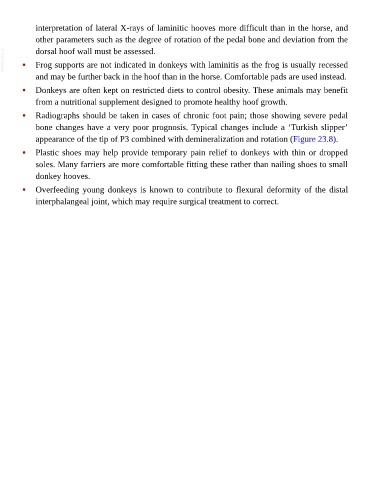Page 1050 - The Veterinary Care of the Horse
P. 1050
interpretation of lateral X-rays of laminitic hooves more difficult than in the horse, and
other parameters such as the degree of rotation of the pedal bone and deviation from the
VetBooks.ir • dorsal hoof wall must be assessed.
Frog supports are not indicated in donkeys with laminitis as the frog is usually recessed
and may be further back in the hoof than in the horse. Comfortable pads are used instead.
• Donkeys are often kept on restricted diets to control obesity. These animals may benefit
from a nutritional supplement designed to promote healthy hoof growth.
• Radiographs should be taken in cases of chronic foot pain; those showing severe pedal
bone changes have a very poor prognosis. Typical changes include a ‘Turkish slipper’
appearance of the tip of P3 combined with demineralization and rotation (Figure 23.8).
• Plastic shoes may help provide temporary pain relief to donkeys with thin or dropped
soles. Many farriers are more comfortable fitting these rather than nailing shoes to small
donkey hooves.
• Overfeeding young donkeys is known to contribute to flexural deformity of the distal
interphalangeal joint, which may require surgical treatment to correct.

